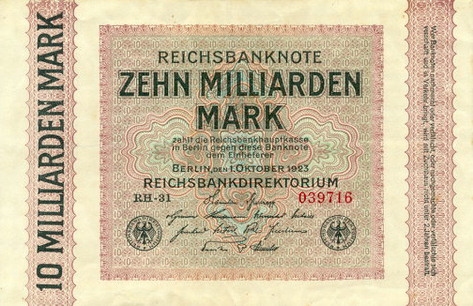Germany (Weimar Republic)
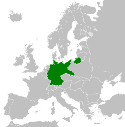
 The Weimar Republic is the name given by historians to the federal republic and parliamentary representative democracy established in 1919 in Germany to replace the imperial form of government. It was named after Weimar, the city where the constitutional assembly took place. Following World War I, the republic emerged from the German Revolution in November 1918. In 1919, a national assembly was convened in Weimar, where a new constitution for the German Reich was written, then adopted on 11 August of that same year. The ensuing period of liberal democracy lapsed in the early 1930s, leading to the ascent of the nascent Nazi Party and Adolf Hitler in 1933. The legal measures taken by the Nazi government in February and March 1933, commonly known as Gleichschaltung ("coordination") meant that the government could legislate contrary to the constitution. The republic nominally continued to exist until 1945, as the constitution was never formally repealed. However, the measures taken by the Nazis in the early part of their rule rendered the constitution irrelevant. Thus, 1933 is usually seen as the end of the Weimar Republic and the beginning of Hitler's Third Reich. In its 14 years the Weimar Republic faced numerous problems, including hyperinflation, political extremists (with paramilitaries – both left and right wing), and hostility from the victors of World War I, who tried twice to restructure Germany's reparations payments through the Dawes Plan and the Young Plan. However, it overcame many of the requirements of the Treaty of Versailles (Germany eventually repaid a reduced amount of the reparations required of the treaty, with the last payment being made on 3 October 2010), reformed the currency, and unified tax politics and the railway system, as well as having a unique cultural impact with its art, music and cinema. Germany continued to lead the world in science and technology during this period. (© Wikipedia)
The Weimar Republic is the name given by historians to the federal republic and parliamentary representative democracy established in 1919 in Germany to replace the imperial form of government. It was named after Weimar, the city where the constitutional assembly took place. Following World War I, the republic emerged from the German Revolution in November 1918. In 1919, a national assembly was convened in Weimar, where a new constitution for the German Reich was written, then adopted on 11 August of that same year. The ensuing period of liberal democracy lapsed in the early 1930s, leading to the ascent of the nascent Nazi Party and Adolf Hitler in 1933. The legal measures taken by the Nazi government in February and March 1933, commonly known as Gleichschaltung ("coordination") meant that the government could legislate contrary to the constitution. The republic nominally continued to exist until 1945, as the constitution was never formally repealed. However, the measures taken by the Nazis in the early part of their rule rendered the constitution irrelevant. Thus, 1933 is usually seen as the end of the Weimar Republic and the beginning of Hitler's Third Reich. In its 14 years the Weimar Republic faced numerous problems, including hyperinflation, political extremists (with paramilitaries – both left and right wing), and hostility from the victors of World War I, who tried twice to restructure Germany's reparations payments through the Dawes Plan and the Young Plan. However, it overcame many of the requirements of the Treaty of Versailles (Germany eventually repaid a reduced amount of the reparations required of the treaty, with the last payment being made on 3 October 2010), reformed the currency, and unified tax politics and the railway system, as well as having a unique cultural impact with its art, music and cinema. Germany continued to lead the world in science and technology during this period. (© Wikipedia)2 Mark - P59
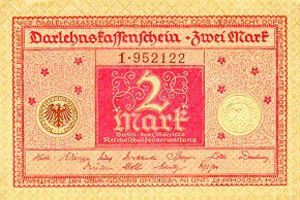
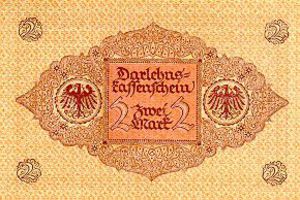
1 Mark - P61a
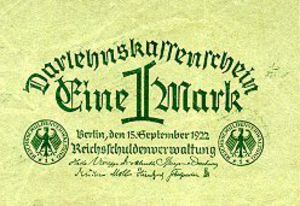
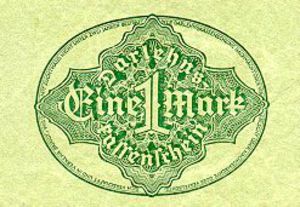
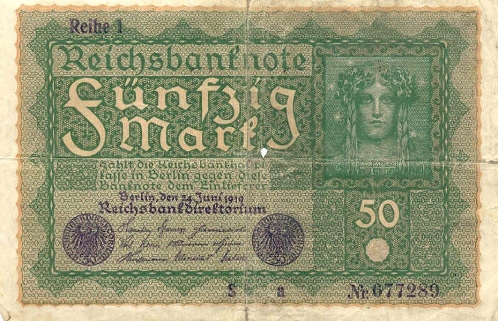
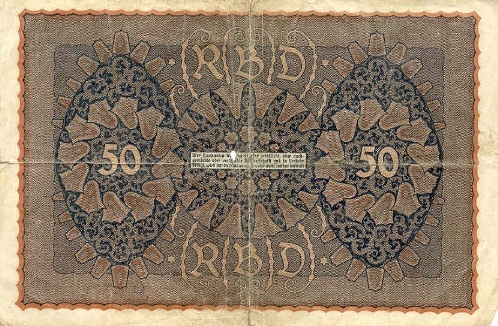
10 Mark - P67a1
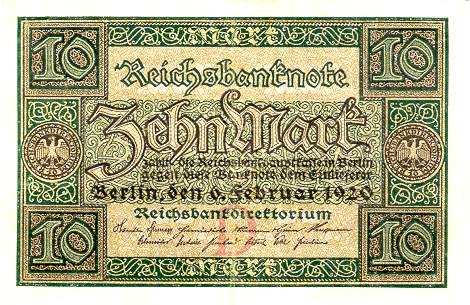
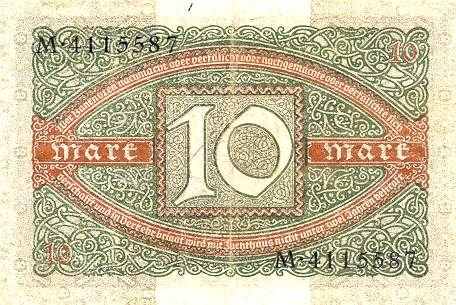
50 Mark - P68
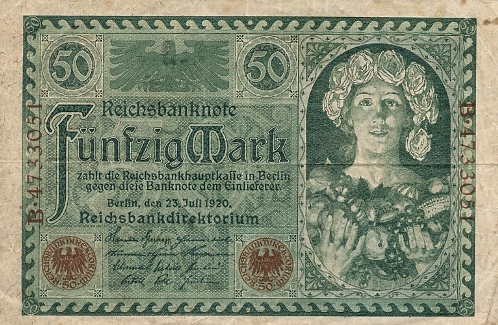
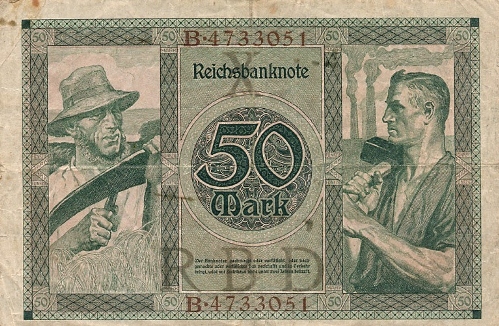
100 Mark - P69b
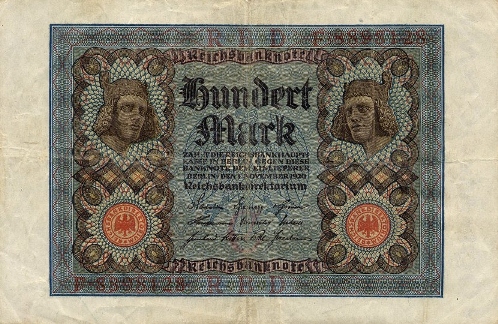
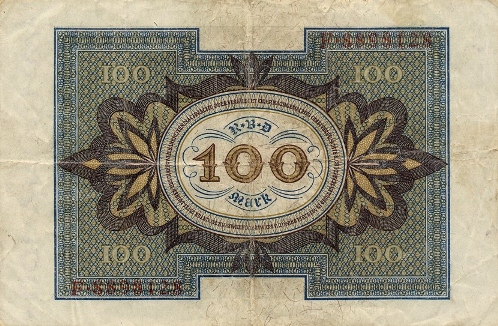
10,000 Mark - P70
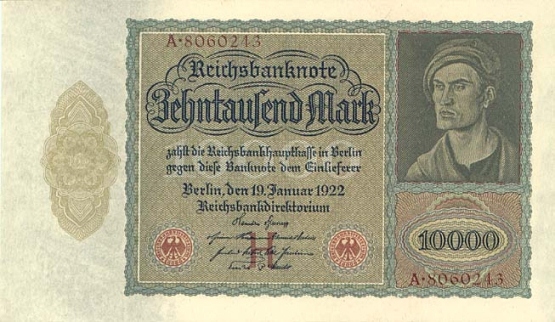
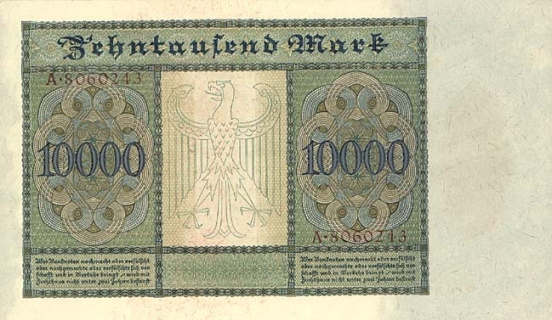
10,000 Mark - P72
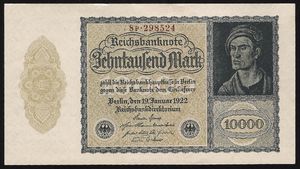
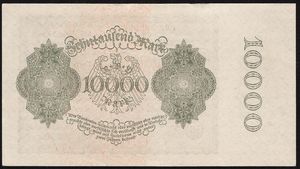
500 Mark - P74a
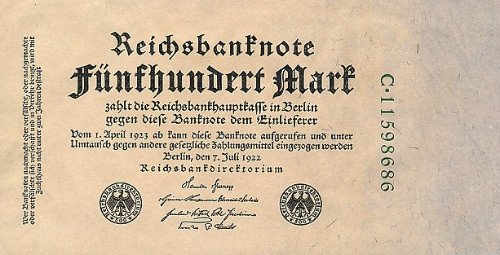
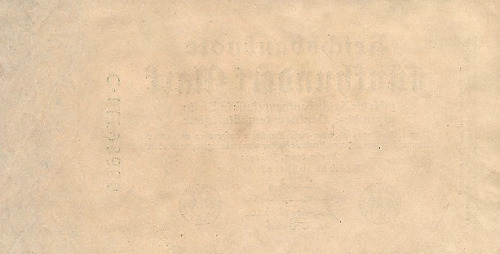
1,000 Mark - P76f
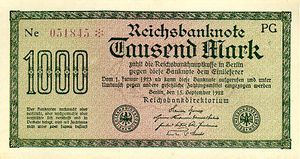
50,000 Mark - P79
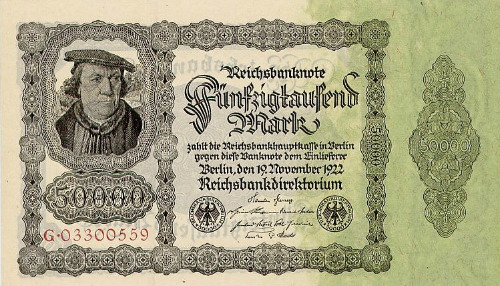
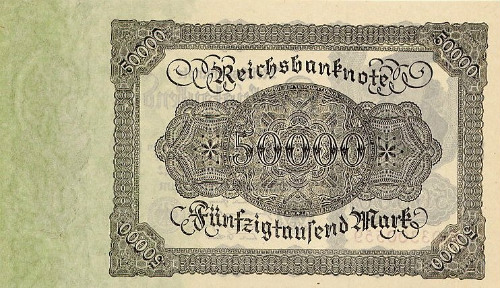
50,000 Mark - P80
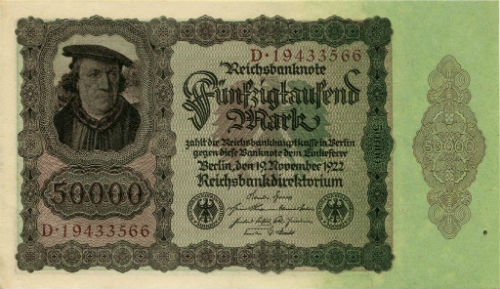
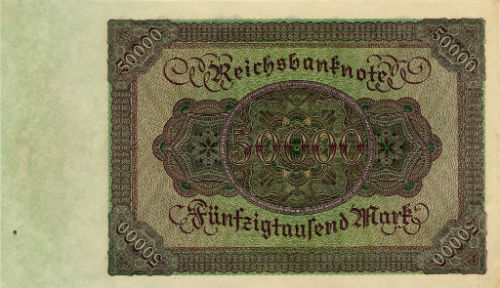
5,000 Mark - P81a
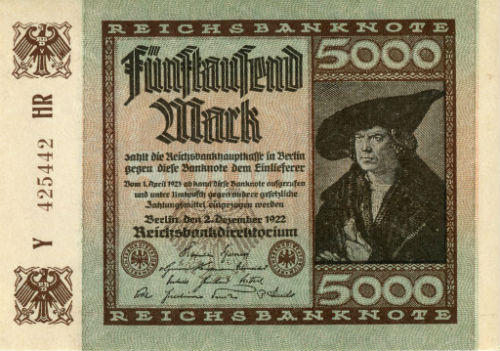
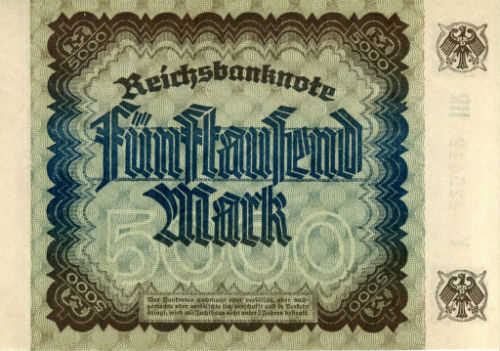
100,000 Mark - P83a2
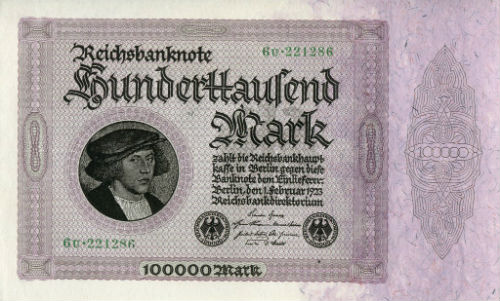
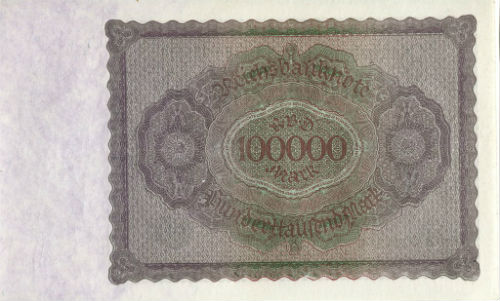
20,000 Mark - P85a
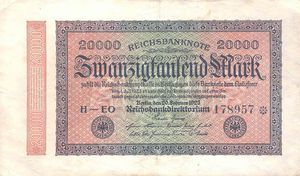
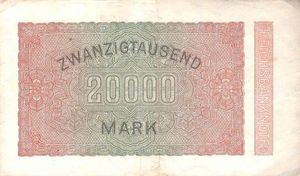
20,000 Mark - P85b


1 Million Mark - P93
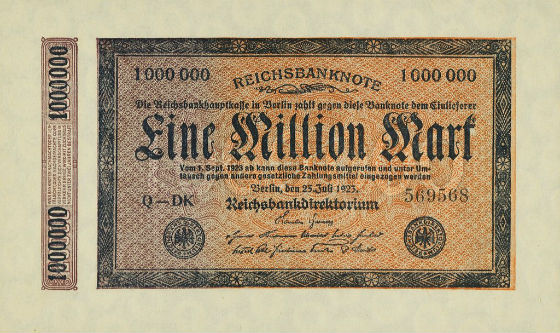
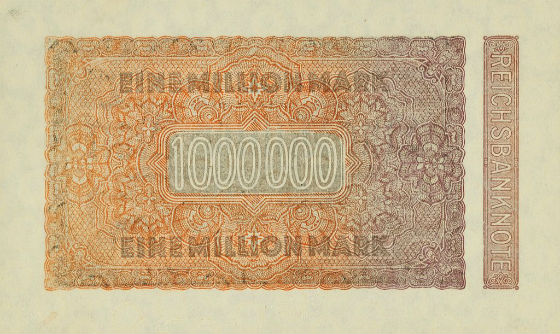
5 Million Mark - P95
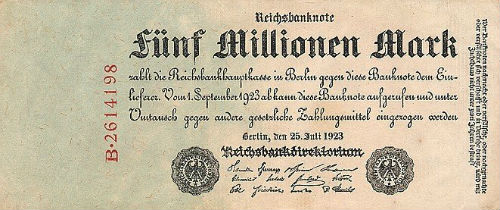
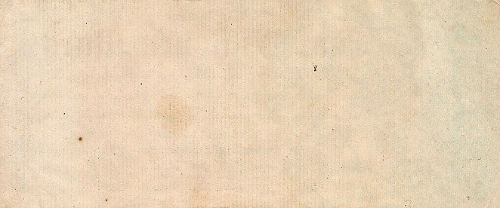
50 Million Mark - P97a
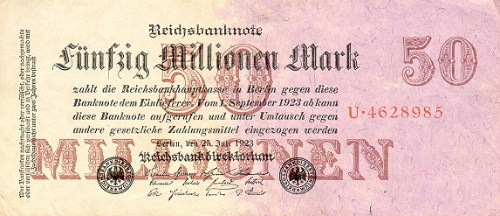
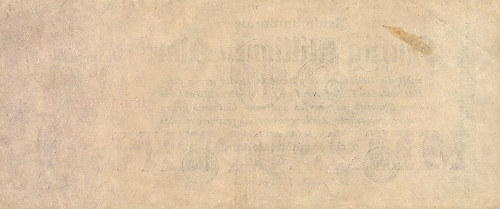
1 Million Mark - P102b
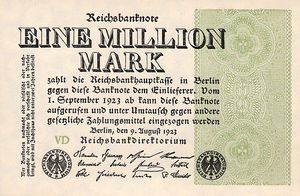
2 Million Mark - P104b
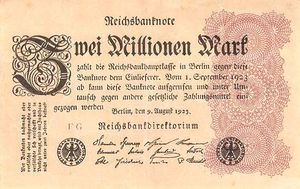
10 Million Mark - P106a

100 Million Mark - P107e1
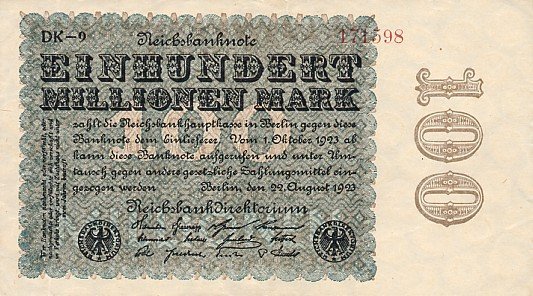
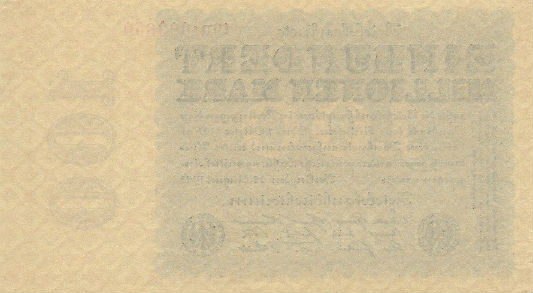
50 Million Mark - P109b2
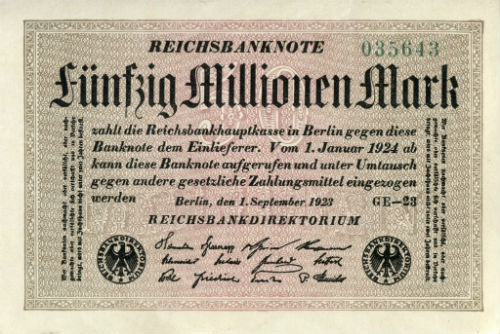
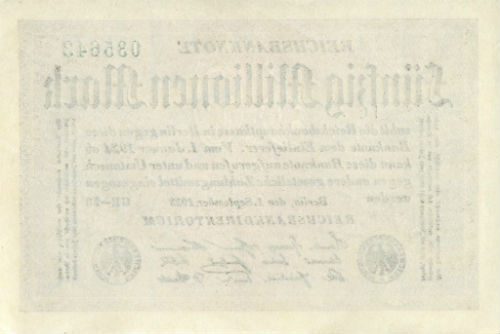
500 Million Mark - P110f
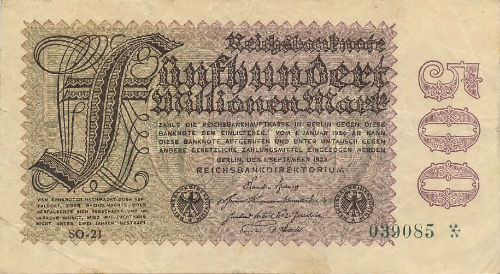
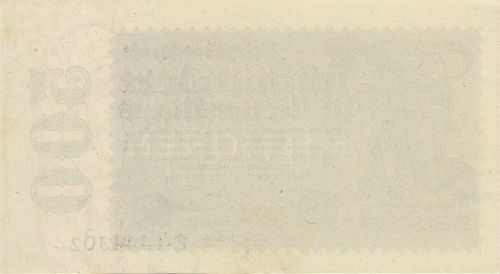
1 Milliarde Mark on 1,000 Mark - P113a
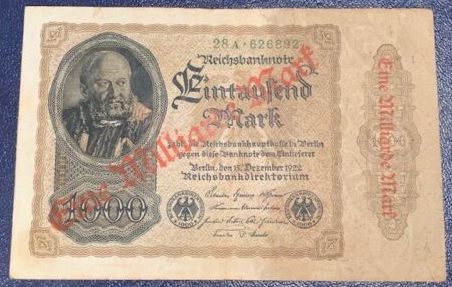
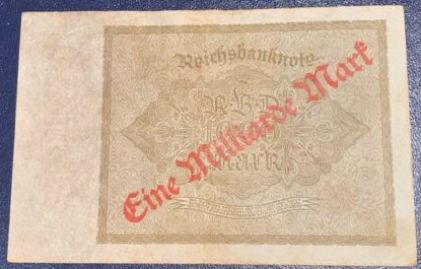
10 Billion Mark - P117b
